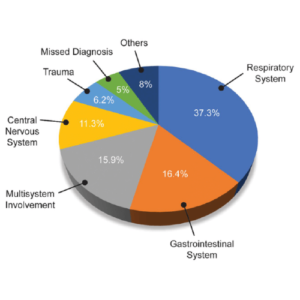Author: Dr. Sanaullah Sajid
Pakistan Health status and disease burden
According to the World Health Organization, the health status in Pakistan is generally poor. The country has a high infant mortality rate, a high maternal mortality rate, and a high incidence of disease. The leading causes of death in Pakistan are pneumonia, diarrhoea, and tuberculosis. The country also has a high incidence of HIV/AIDS. There are several factors that contribute to the poor health status in Pakistan. These include poverty, poor sanitation, and a lack of access to healthcare. The government of Pakistan has made some efforts to improve the health status of the population. For example, the government has launched a National Health Insurance Scheme which provides free healthcare to the poorest in the country. Additionally, the government has also established several health clinics and hospitals in rural and urban areas. However, more needs to be done to improve the health of the population. There are several NGOs and international organizations working in Pakistan to improve the health of the population. These organizations are working to improve access to healthcare, to improve sanitation, and to raise awareness about the importance of good health.
For this reason, the Pakistan Disease burden study (PDBS) is a national project which aimed to provide an up-to-date, comprehensive, and evidence-based assessment of the burden of disease in Pakistan. It is the first study of its kind in Pakistan and served as an important source of information for policymakers, health care providers, researchers, and the general public. The study was conducted by the Pakistan Burden of Disease Study Group, a consortium of Pakistani and international experts, funded by the Government of Pakistan and the World Bank. It covered all major diseases and injuries, as well as risk factors for disease.
There is a lack of high-quality medical research in Pakistan. The majority of studies are observational and descriptive, with a few randomized controlled trials and meta-analyses. The quality of research is often poor, with a lack of standardization and little transparency. There is a need for more rigorous research in Pakistan, which can be used to inform policy and improve health outcomes. The Pakistani government has made some efforts to improve medical research in the country. In 2012, the government established the Pakistan Council of Research in Water Resources (PCRWR) to promote and coordinate water research. The council has supported several studies on water quality and sanitation in Pakistan. In 2015, the government also launched the Pakistan National Health Research Council (PNHRC) to improve the quality of health research in the country. The council has established a number of initiatives, including a national health research repository and a health research funding program. Despite these efforts, medical research in Pakistan remains underdeveloped. There is a need for more investment in research infrastructure, training, and capacity building. There is also a need for more coordination and collaboration between different stakeholders, including government, academia, and the private sector.
In order to improve medical research in Pakistan, it is important to increase investment in research and development (R&D). The government of Pakistan has set a target of 2% of GDP for R&D expenditure by 2025. However, currently, only 0.4% of GDP is being spent on R&D. There is a need for more private sector investment in medical research in Pakistan. The private sector currently spends very little on R&D, and most of its investment goes towards clinical trials. There is a need for the private sector to invest more in basic and applied research and need for more international cooperation and support for medical research in Pakistan. International organizations, such as the World Health Organization (WHO) and the Global Fund to Fight AIDS, Tuberculosis and Malaria, can provide support for research infrastructure, training, and capacity building.
The burden of disease in Pakistan is relatively high as compared to other countries in the region. The overall prevalence of disease in Pakistan is estimated to be around 38% which could be 50% by 2030 (WHO). Pakistan also has a high burden of non-communicable diseases such as cardiovascular diseases, diabetes, and cancer. The leading causes of death in Pakistan are respiratory infections, diarrheal diseases, tuberculosis, and HIV/AIDS. The Pakistani government has taken several steps to improve the country’s health situation. These include the launch of the National Health Insurance Scheme, the introduction of the Primary Healthcare Centers initiative, and the establishment of the Pakistan Medical Association. Despite these efforts, the burden of disease in Pakistan remains high. This is due in part to the country’s high population growth rate, which is straining the country’s health resources.

